Context
The city that we selected for our project was Gda?sk – a city in Europe, in northern Poland with a coastal and temperate climate. We looked closely at temperature, humidity, radiation, and wind during our research on the local climate conditions.

Climate analysis
Gdansk experiences a moderate climate with warm, but not excessively hot summers and moderately cold winters (although the temperature ranges from -12 to 28 degrees, over 80% of the year temperature ranges only between 0 and 20).
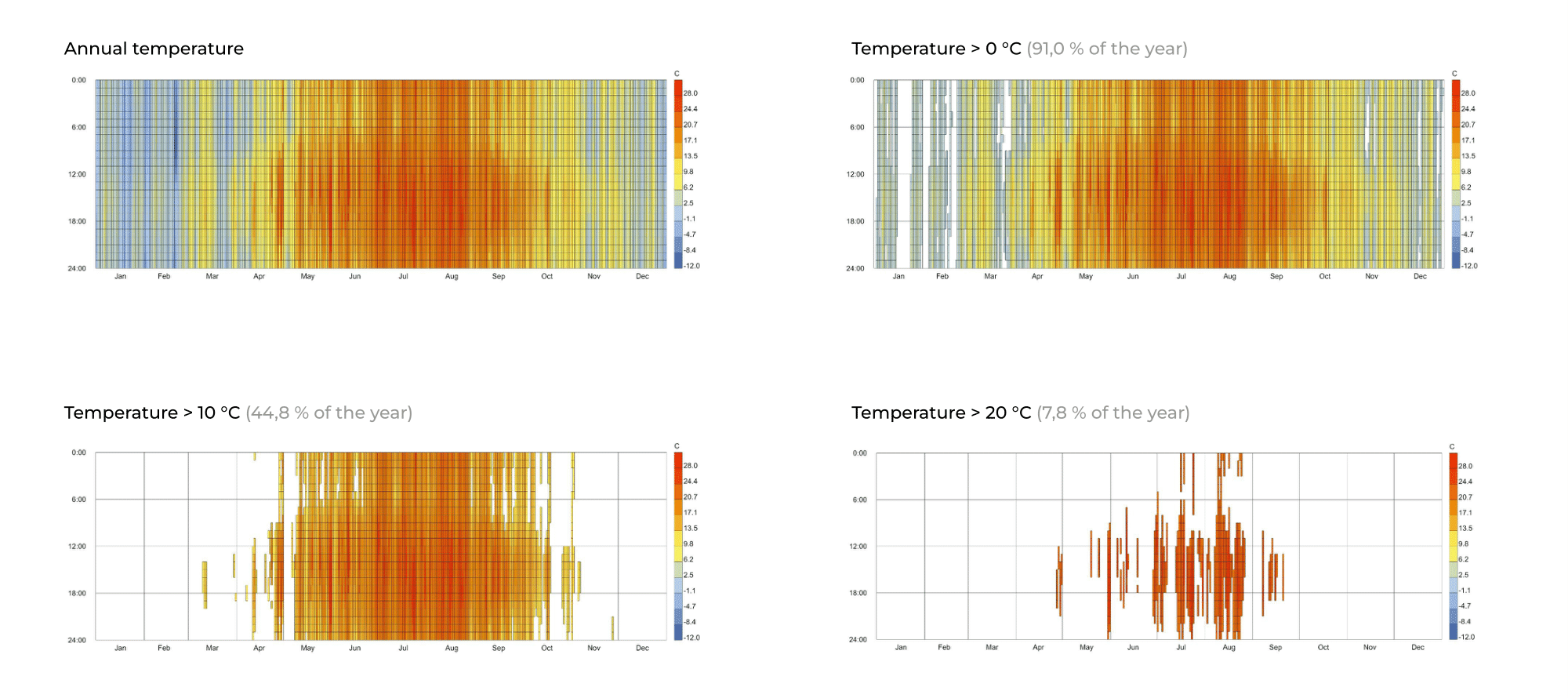
The humidity is slightly higher due to the coastal, temperate climate. For that reason proper ventilation is important.

The main source of sun radiation comes from the southern direction, with beneficial radiation during winter, when the sun is lower, and harmful radiation during summer when the sun is higher.
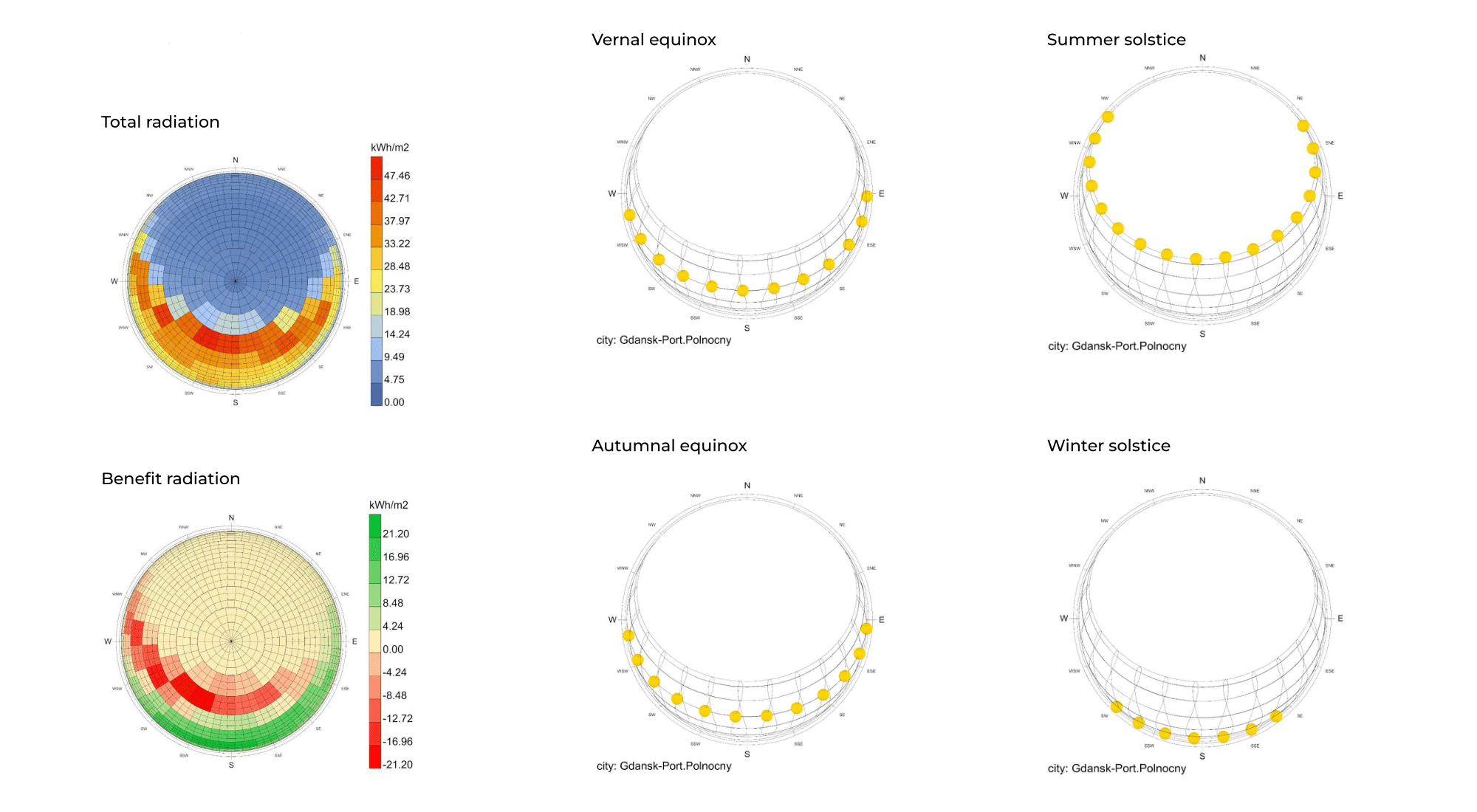
The wind speed varies, to up to 18 m/s. The strongest winds occur mostly during winter and spring, and the wind direction varies depending on the season, however strongest winds occur mostly from the northern direction.
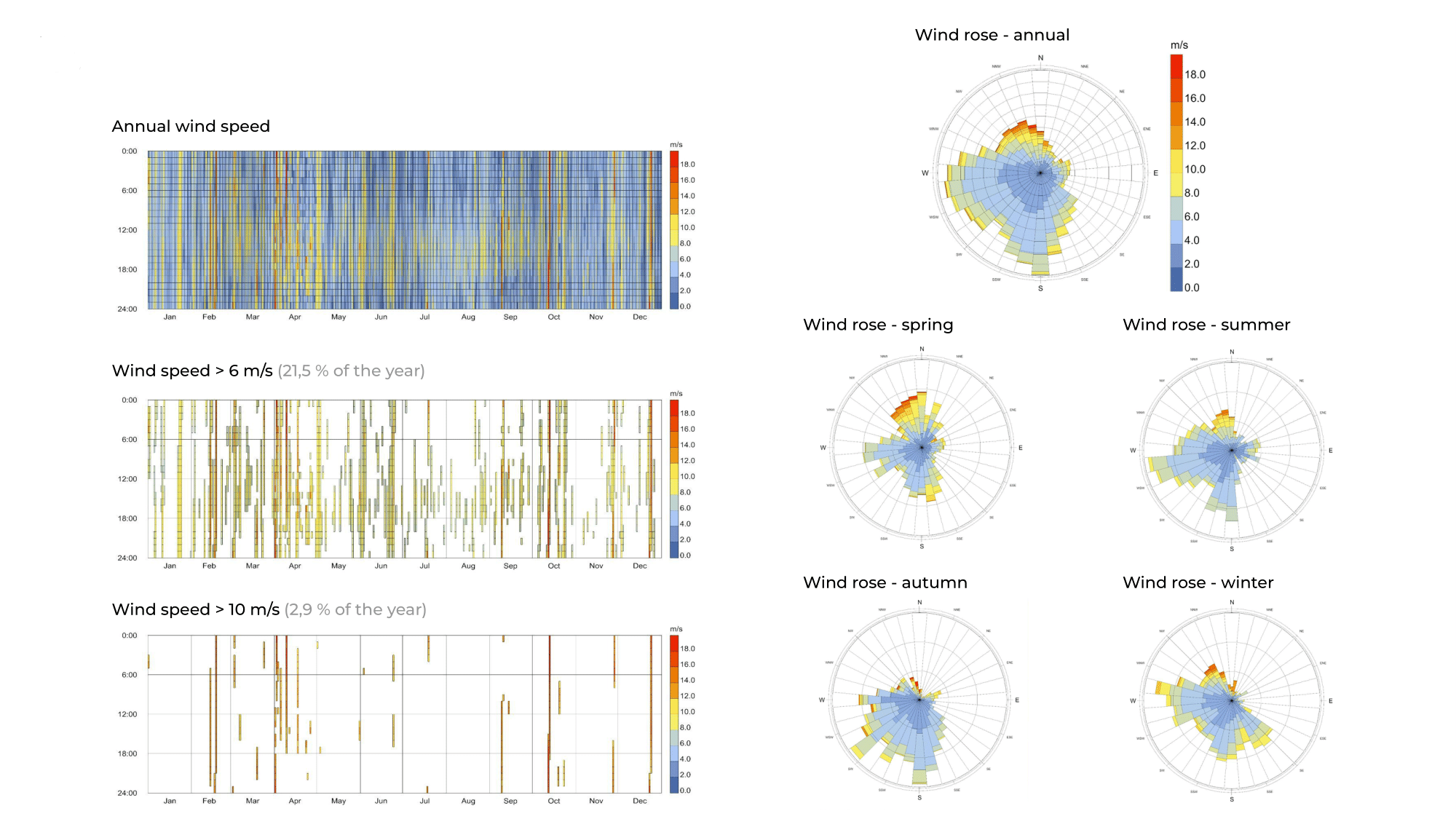
Conclusions: For both outdoor and indoor environments, winter poses a bigger challenge than summer. Factors such as the best orientation of the buildings, window shading, and window size should be considered for maximizing sunlight and utilizing the beneficial sun radiation (among other things). For the outdoor environment building orientation, along with the wind speed and comfort should be considered to balance the humidity and the cold winds.
Site
Our selected site is located near the city center and is surrounded by low-rise and medium-rise buildings.

Block parameters
Constraints:
- Construction area (each): 1200 m2
- Distance btw building: 5 m
- Height: 24 m
- Width: 18 m
- Number of buildings: 4
Variations:
- Shape
- Position
- Orientation
Winter sun hours
With sun hours, we wanted to focus on the winter. We wanted to use genetic algorithms not to find the best solution, but to see how the buildings react to the condition and to each other. it will help to understand the building environment better.

The fact that the sun position is low, and the neighboring buildings are blocking the sun, causes the lower floors of the building to rarely receive sunlight. The “Optimized solution” has a courtyard in the south, which allows more sun to come even on the first floor.
Yearly Benefit / Harm Radiation
With the radiation study, we want to maximize the average kWh/m2 number. You can see that the building tried to move to the north, letting the courtyard to have more beneficial sun from the south.

Residential Daylight Autonomy
For the indoor analysis, we decided to do a residential daylight autonomy study. Residential Daylight Autonomy is a concept primarily based on the concept of Spatial Daylight Autonomy, (sDA 300 lux 50% time), however, instead of one annual average, 12 timeframes are analyzed to keep track of diurnal and seasonal fluctuations (morning, noon, and evening defined as sunrise-11, 11–15, 15-sunset for every season – Spring (Feb/07 to May/06), Summer (May/07 to Aug/06), Fall (Aug/07 to Nov/06) and Winter (Nov/07 to Feb/06).
For this study, three massing options were created. The first option – with N-S exposure, the second one with E-W exposure, and a version in between. For each option % of the time with more than 300 lux was calculated for the first and the last floor of each building.
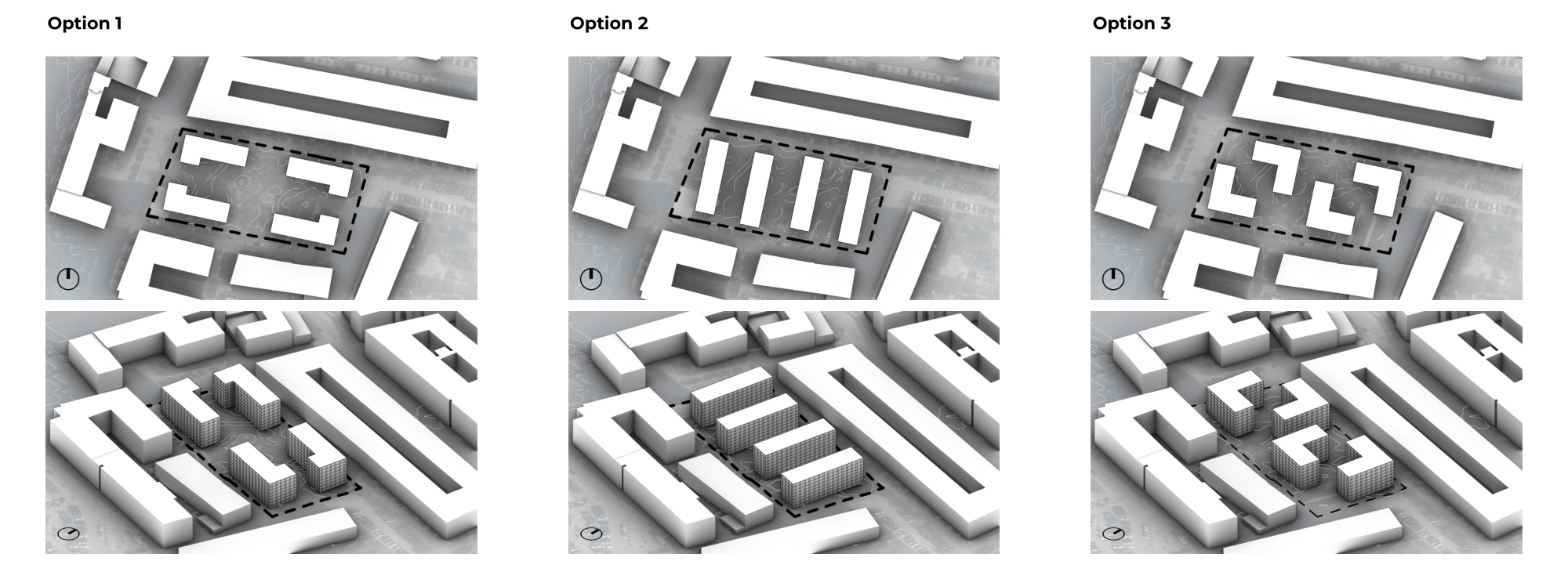
For all the options building height was 24 meters, each block had a GFA of 9600 m2, and windows were placed approximately every 4.5 m. The optimized parameters were building shape and placement on the site.
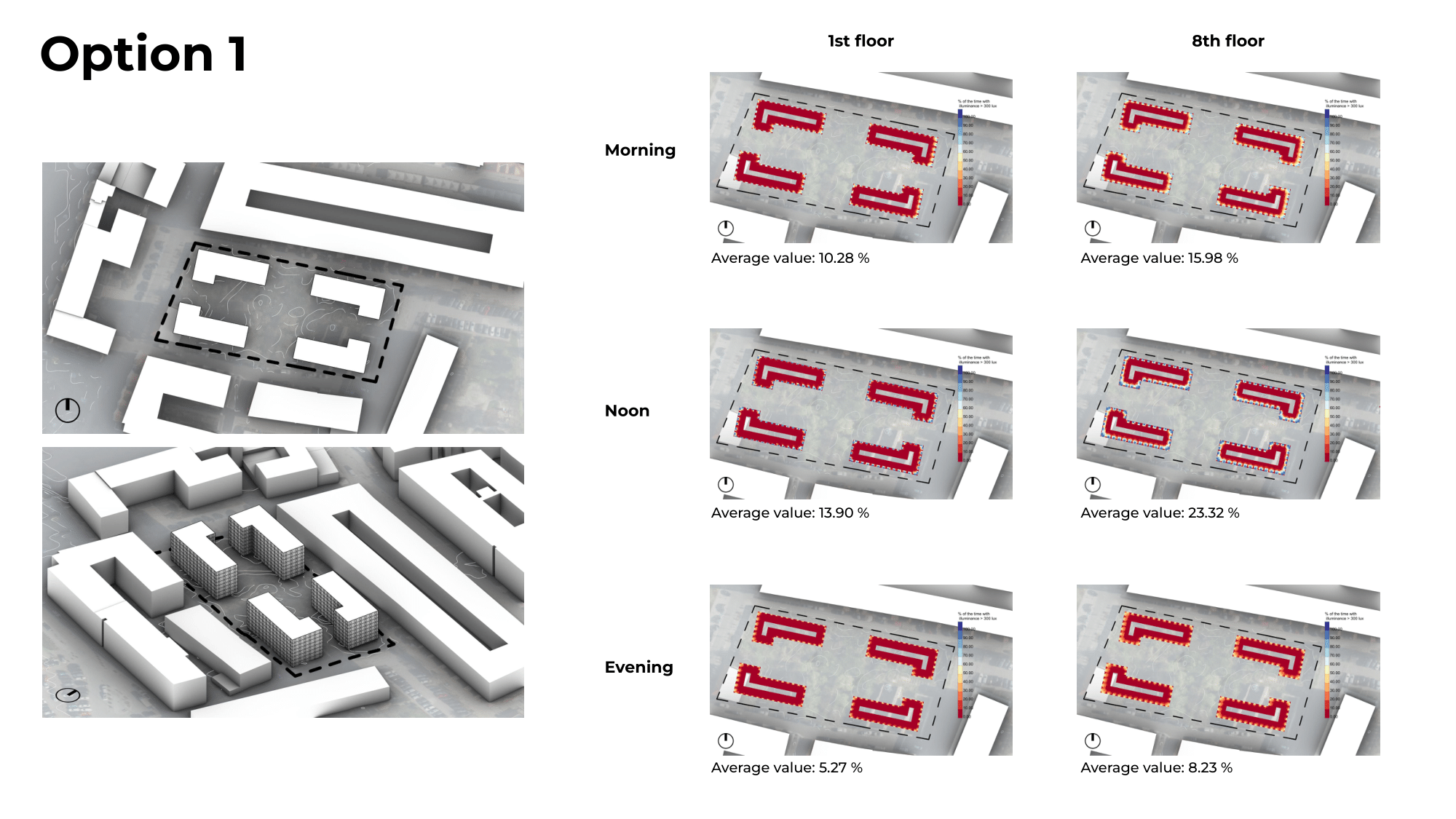
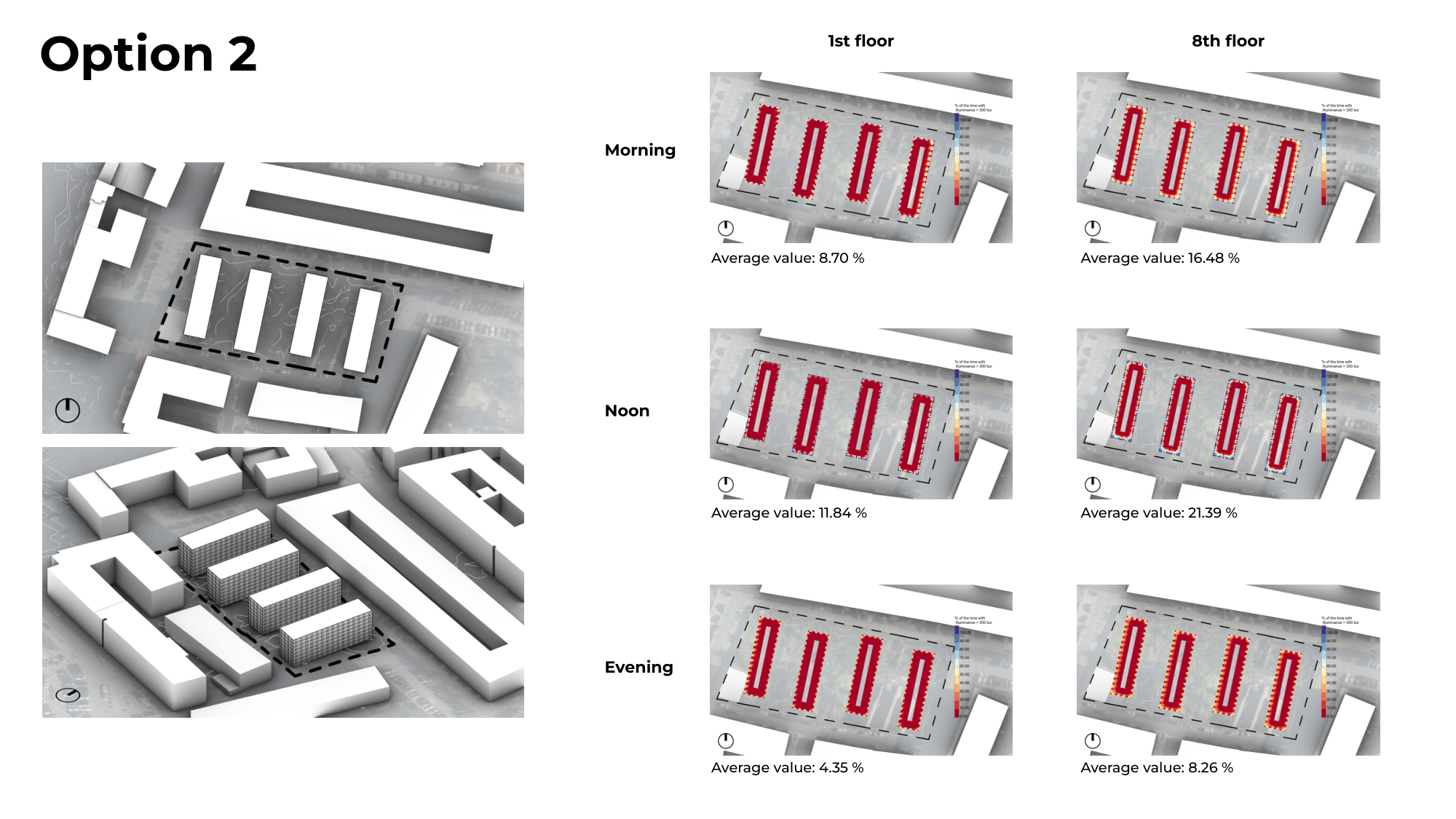
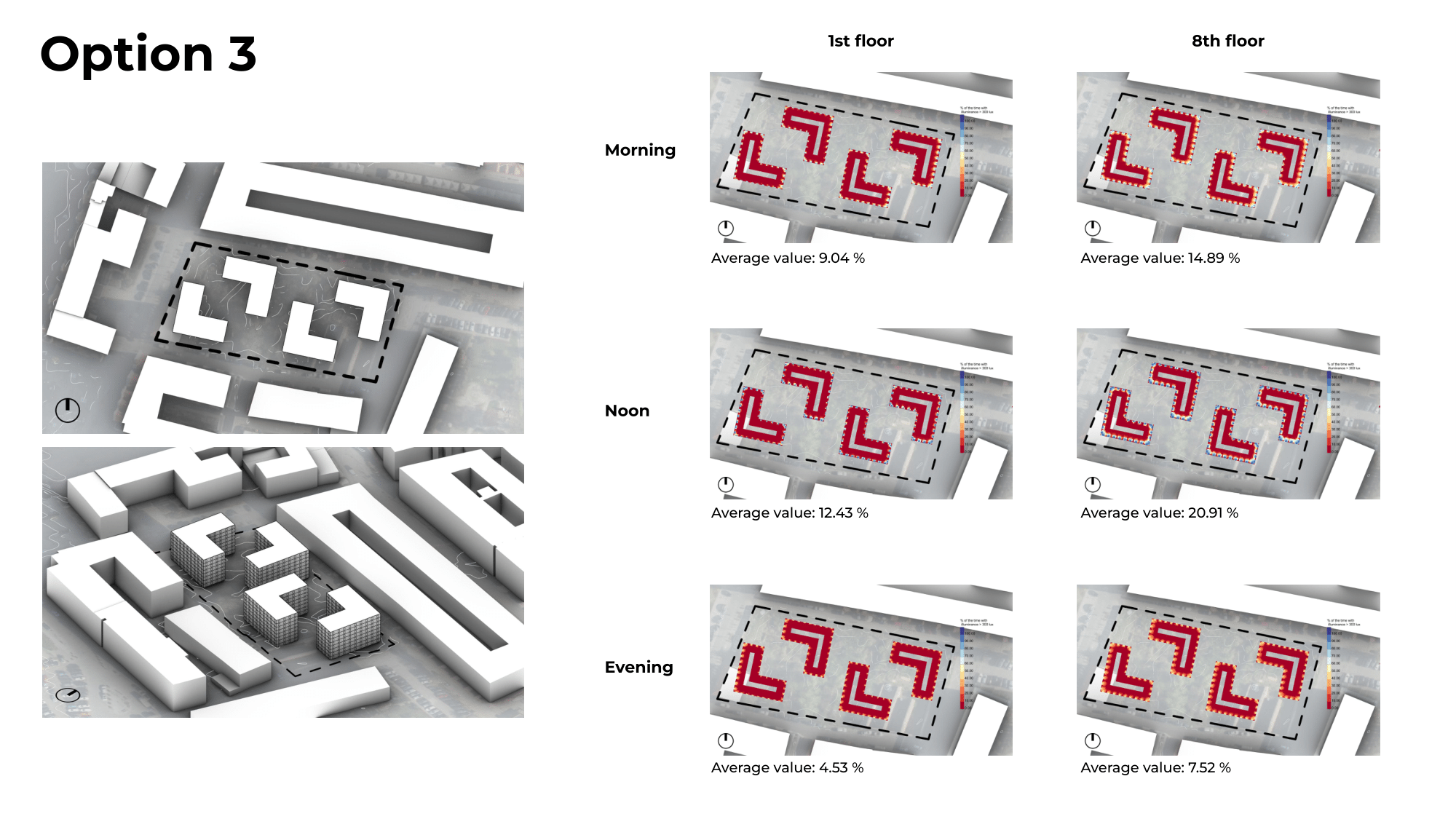
Results: The best option was the one with N-S exposure (with an average score higher only by 1%), mainly because of the advantage of the southern exposure. It also had the highest values within all timeframes. The second best option was the one with E-W exposure, and the worst one (with a small difference of 0.3 %) was the option in between.

Conclusions: This study shows the importance of southern exposure but more importantly, highlights the interesting pattern of differences and similarities between values at different timeframes.
Wind comfort
The decisive factors for our location were identified as the UTCI values (Universal Thermal Climate Index) ‘Sun/NoWind’ and ‘Wind/NoSun’. These values suggest that there is little thermal stress in summer, at most slight heat stress. In winter, however, conditions tend to moderate to strong cold. Therefore, it was decided to consider the months of June to August and December to February separately.
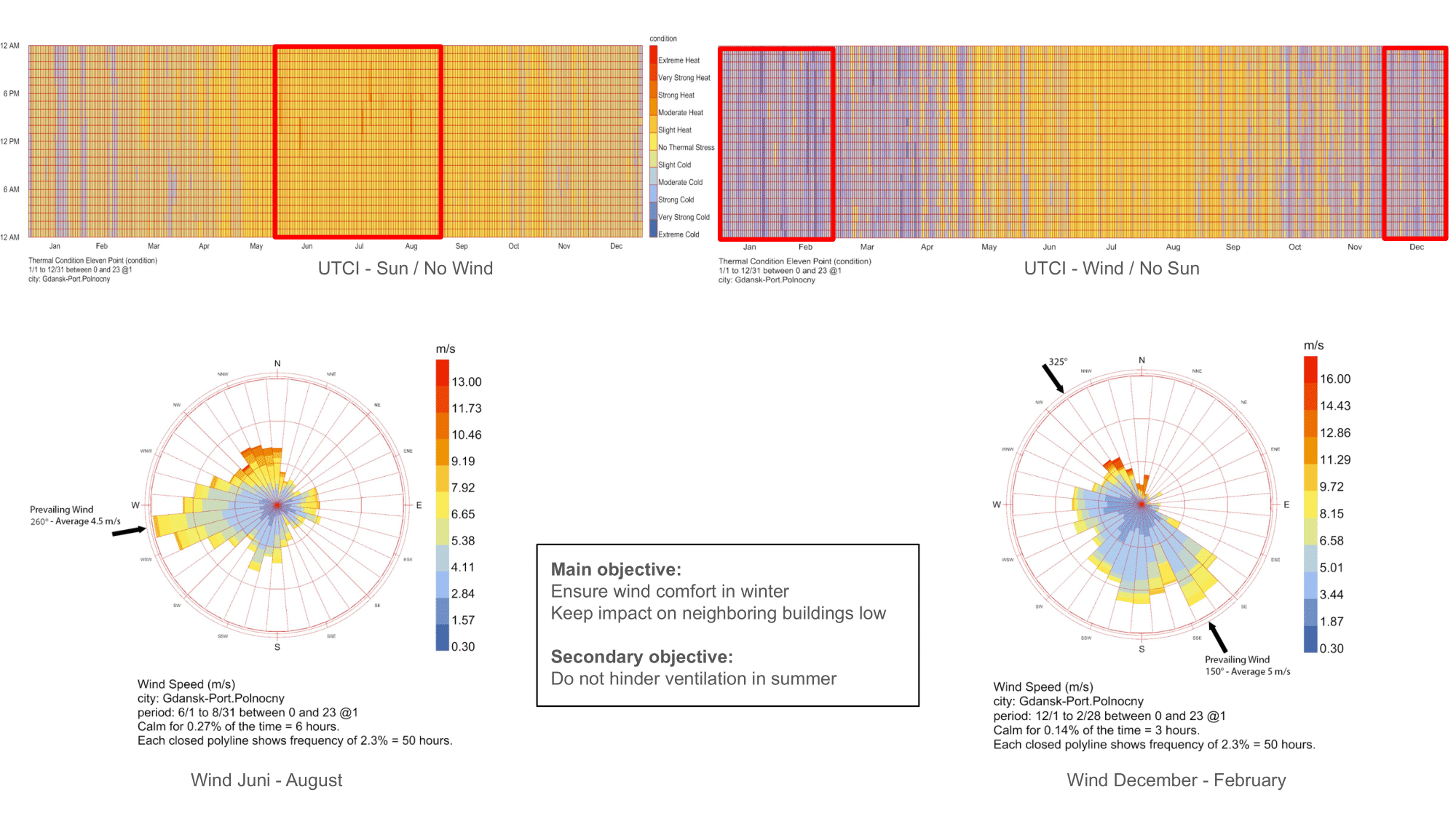
During the summer months, winds predominantly come from the west (260°), with peak values of up to 13 m/s and an average of 4.5 m/s. The winter situation is divided: prevailing winds come from the south (150°) with peak values of 10 m/s and average values of 5 m/s. Less frequently, but stronger, are winds from the north (325°) with peak values of up to 16 m/s. However, the north is already somewhat protected due to strong building structures. In this area, however, narrow streets and tall buildings are predominant, which can lead to discomfort for pedestrians due to the wind tunnel effect. Therefore, it was of great importance to develop a design that minimizes this effect. Based on this situation, the following objectives were set for the location: Ensure sufficient wind comfort in the courtyard during winter and keep the impact on neighboring buildings low.
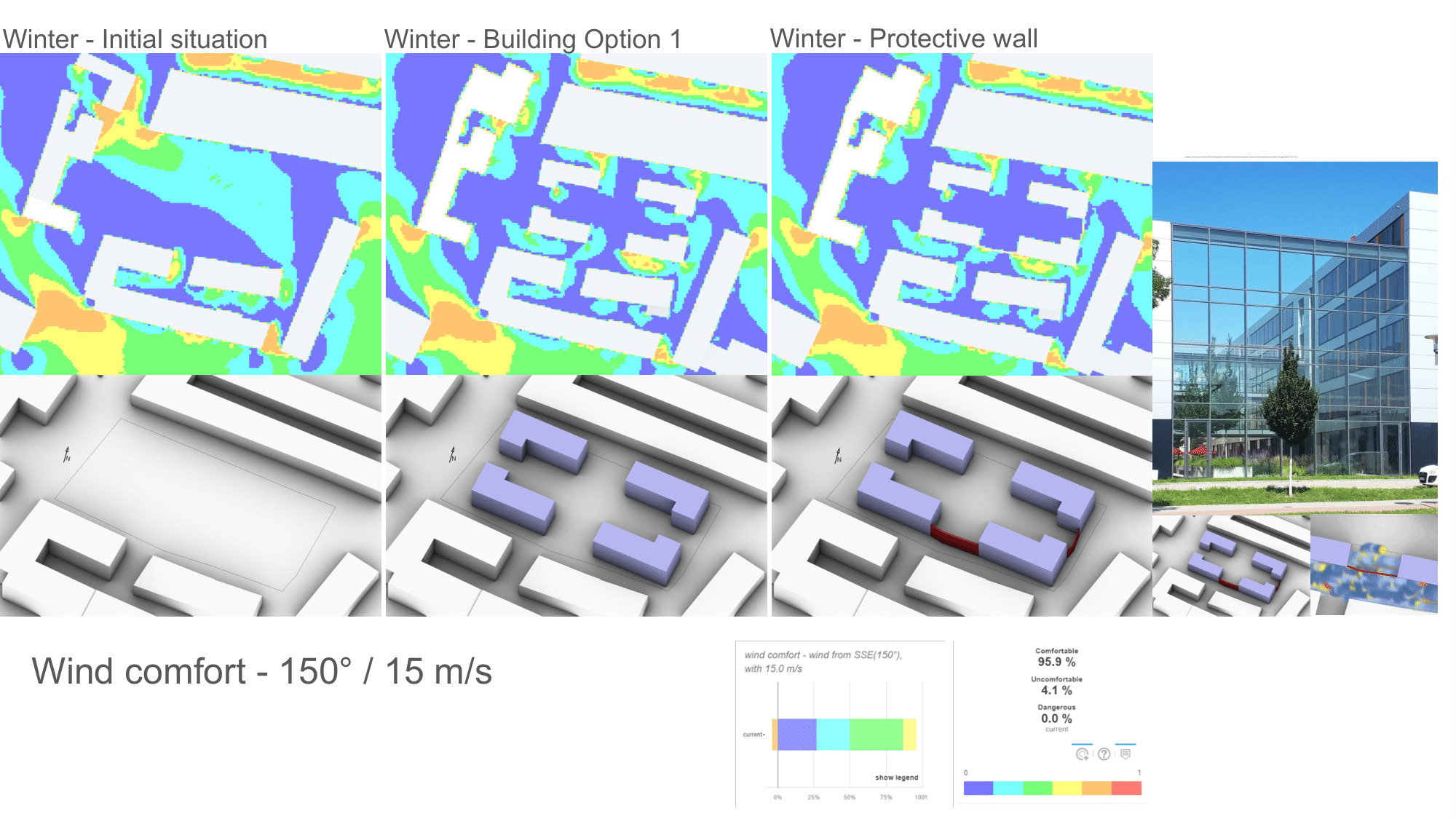
The current situation before construction begins should not be significantly worsened by the new building. As a secondary goal, ventilation in summer should not be significantly hindered. First, the situation without buildings was analyzed. All these analyses were carried out with the Infrared plugins in Grasshopper for quick iteration possibilities. In the open space, only smaller areas of discomfort zones were noticeable. The starting values were 150° at 15 m/s. Our building option 1 seems to have hardly any negative effects; in the north, the comfort on a public square even improves. At a few places lying in the main direction of the wind attack, smaller discomfort zones arise. Furthermore, it was investigated what effects a protective wall in this direction could have and whether the shape of this wall could have significant effects. It turned out that the comfort in the courtyard increased even further. Interestingly, the analysis showed that a protruding protective wall can also improve the situation in the external environment.

Finally, trees were added to the model and calculated using CFD in Eddy3D. Thus, the results of the Infrared tool could be verified, and the effects of the vegetation assessed. Through all these measures, a good comfort situation can be achieved at the site of the building option. For summer, analyses were also carried out with 280° and 5 m/s. Building option 1 was evaluated, and various variants were tested to minimize the obstruction of the wind flow from the prevailing wind direction. However, due to the surrounding buildings, there were hardly any differences between the different variants. The average wind speed in these analyses was determined to be about 1.5 m/s in the courtyard.

